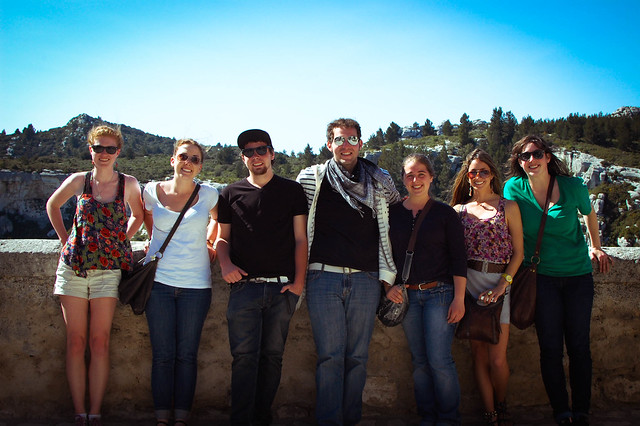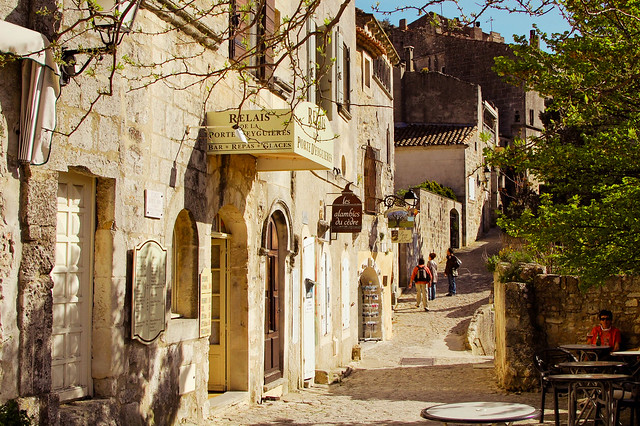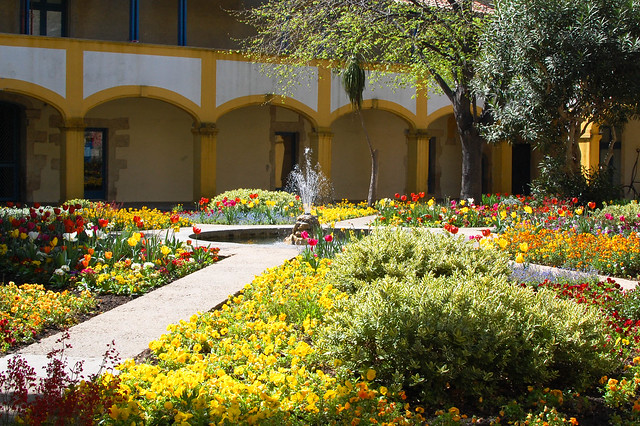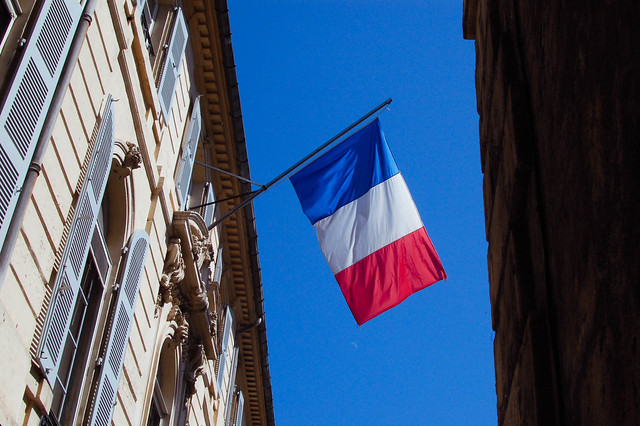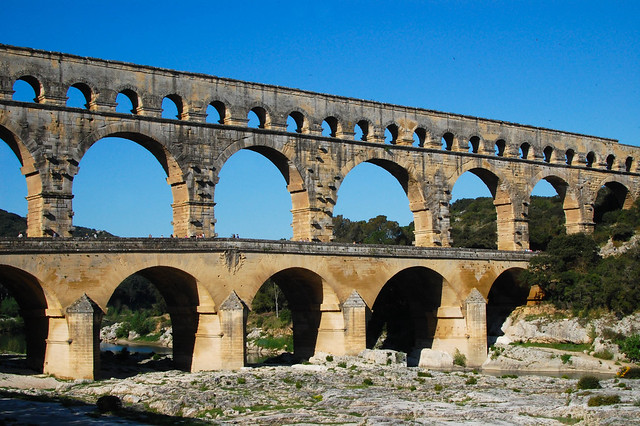This past week was a welcome break from traveling. As wonderful as it is to travel to various places around France (and in two weeks I'll be traveling around
Europe) it was nice to have a week and a weekend without too much fuss. Due to the fact that my host parents were gone last week, this week I ate with them three times (the first was normal, the second was to make up for being gone and the third was the meal I didn't get last week). The first meal, which was on Tuesday, was dominated by many subjects but most notably by talking about France during World War II.
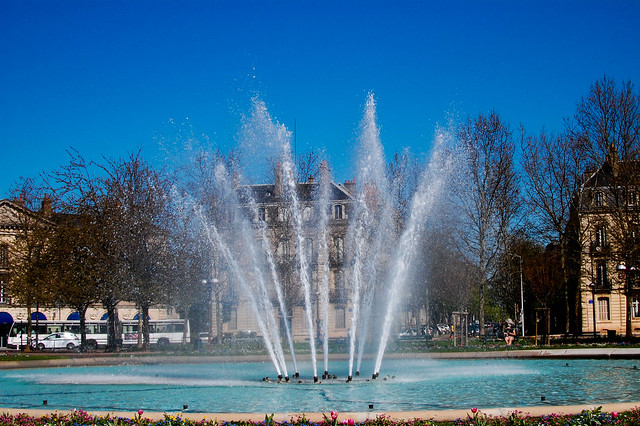 |
| The Place Wilson fountain on a beautiful Saturday afternoon. |
This strangely enough fit in quite well with the History class I had this week wherein we covered WWII and France directly after WWII. We didn't have nearly enough time to talk about it and due to the nature of the class we focused on the politics of France during these periods. I found the entire two hours fascinating but it felt like quite a unique experience to be in a class that essentially talked about the decline and end of the French Empire which essentially began in June of 1940 when the French signed the Armistice with Germany and then set up Vichy France: an anti-semitic, anti-democratic, anti-parliamentarian government that collaborated with the Third Reich and was led by Marechal (Marshall) Philippe Petain. The Vichy government is till this day very controversial in France mostly because opinion is split between:
- Those who argue that the government was illegitimate and established by foreign traitors, which up until the presidency of Jacques Chirac (1995-2007) was the official point of view of the French government. This point of view acknowledges the criminal behavior of the government but denies any responsibility of the French State.
- Those that regretfully acknowledge the responsibility of the French State for its crimes.
Given the crimes of Vichy France it seems pretty wondrous that the French Republic ended up occupying a zone of Germany, joining NATO (OTAN in French) and becoming a permanent member of the Security Council. All of this would have been impossible were it not for General (and in 1958 President) Charles de Gaulle. De Gaulle managed to escape to Britain and famously gave a radio advice on June 18th (four days before the Armistice was signed) urging the French people to continue fighting Nazi Germany. This failed but he was able to form les Forces Francais Libre (FFL; Free French Forces). For the first few years of the war de Gaulle was mostly the sole force working as a voice of Free France (an essentially illegal government). He and President Franklin D. Roosevelt quite famously shared mutual animosity for one another and de Gaulle's stubbornness constantly put him at odds with both FDR and Churchill. This is a fact that was not touched upon in this particular History class but other History classes and many documents can attest to the truth of it.
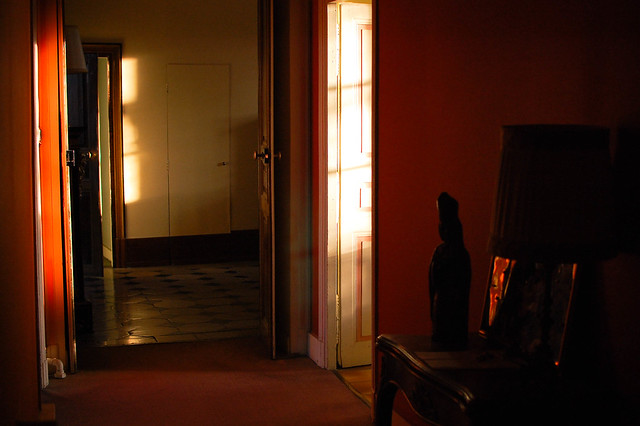 |
| The afternoon sun streaming into my host family's apartment. |
After the Allied invasion of North Africa in 1942, the FFL dramatically increased and became largely made up of soldiers from the French colonies. These Free French Forces were then able to help with the invasion of Italy and then southern France and when Paris was liberated in 1944, de Gaulle drove near the front of the liberating forces.
Overall the history class was quite fascinating and I surprisingly learned a lot that I hadn't before. All of the history classes in which WWII is discussed rarely touch on France other than stating how in a month France was defeated and that the Vichy government was set up. I'm not sure of this is because I usually learn European history from an American or British standpoint or because after the Armistice France's role in relation to other nations was quite marginal but it was great to get the other point of view particularly when the two sides of French politics were so vastly different.
 |
This incredibly detailed work of art was made entirely of grains of sand
by Buddhist monks at the Buddhist temple in Burgundy. |
On a subject completely unrelated to France in WWII, this weekend was completely beautiful. On Saturday there was not a single cloud in the sky and the temperature was between 70 and 80 degrees. In a word, it was incredible and I found it very odd to be receiving news of snow in New Hampshire because with such summery weather out it was weird to imagine winter still gripping NH even though I've experienced such weather many times before. Saturday ended up being a great day of relaxation and I mostly walked around town, sat in the park and read and later on had ice cream with Kendra and Michelle.
Sunday my host father took the Swiss and I on what was basically a trip to the country side. I say basically because we made quite a few stops on the way there and back. The first was to Autun which was founded during the Gall-Roman period. Today the city still has several of the original doors, a large portion of the original ramparts and the remains of the amphitheater which was in its time one of the largest in Western Europe. In addition to stopping and seeing these particular ruins we also stopped at the town center, the Cathedral, a very ancient Pyramid that looks over the city and the ruins of a Roman temple just outside of the city.
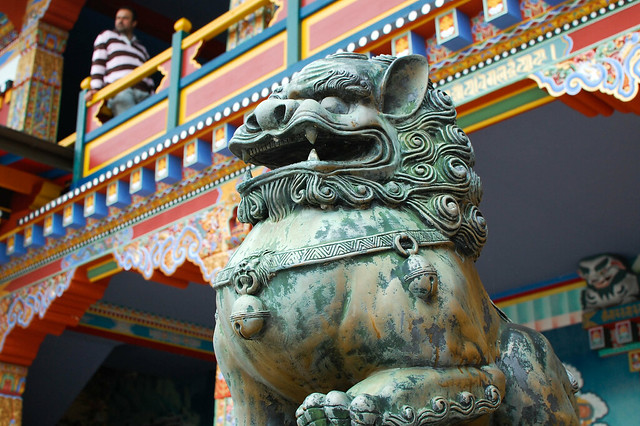
After Autun we went to my host father's house in the countryside where we had lunch. I have to say that the French countryside is pretty picturesque and it was interesting to note that instead of rock walls dividing property, the French utilize hedges. I suppose this makes an enormous amount of sense seeing as how unlike New England (and notably New Hampshire) the French fields were not littered with an incredible amount of granite rocks. Though I'm sure the French were able to grow food much more simply without having to constantly remove rocks, there's something quite wonderful about a good rock wall.
Not too far from my host father's house was an actual Buddhist temple. Burgundy is probably one of the last places in Europe where I would think "this would be a good place for a Buddhist temple" but that didn't stop whoever built that temple from building it. Having never been to one before I didn't quite know what to expect but the temple seemed to me to be an incredible mix of color and peace. From the intricate wood carving and painting, to the peacock just walking around or to the prayer flags on massive poles or in the trees, the temple was certainly unexpected but it was also beautiful.
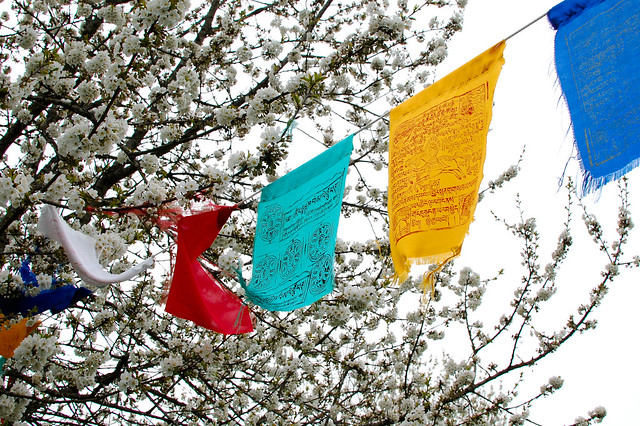 |
Prayer flags at the Buddhist temple. Prayer flags which traditionally
come in sets of 5 (one for each element) promote peace, compassion,
strength and wisdom and do not carry prayers or messages to the
gods, instead sending good-will and compassion into all of space.
They are often seen in the Himalayas. |
Following the temple we preceded to the house of my host father's parents. As my host father said, the house was almost a museum in side with an array of spears, bayonets, guns, pistols and knives adorning the wall. We didn't stay inside too long because my host father's mother is quite ill but we did walk down to his brother's farm (where there were some adorable looking lambs, none of which were named 'Purple'). Further down the road from the farm were several man-made ponds with little houses built on stilts in the water. The houses (each of which sits in its own individual pond) can be rented out for about a weekend for those seeking some solitude in the French countryside.
Following this we finally headed home though not before briefly stopping at Chateauneuf which at 18h45 (6:45 PM) was closed. Given that Sunday was cloudy and a little rainy and also that we (or at least I) were tired from the day we didn't stay long but I would definitely love to come back as the village and the castle (a chateau fort) were both picturesque and authentic.
 |
| An old door in a wall at Chateauneuf. |
To finish off the day I opened up the jar of peanut butter my parents sent me (thank you!) and made myself a very delicious PB&J that I'm afraid the French, not really understand just how amazing peanut butter is, wouldn't really appreciate.

